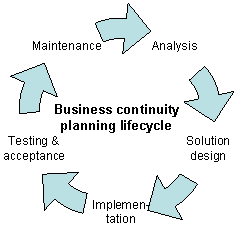Related Research Articles
Customer relationship management (CRM) is the process of managing interactions with existing as well as past and potential customers. It is one of many different approaches that allow a company to manage and analyse its own interactions with its past, current and potential customers. It uses data analysis about customers' history with a company to improve business relationships with customers, specifically focusing on customer retention and ultimately driving sales growth.

Enterprise resource planning (ERP) is the integrated management of main business processes, often in real time and mediated by software and technology.

In commerce, supply chain management (SCM), the management of the flow of goods and services, involves the movement and storage of raw materials, of work-in-process inventory, and of finished goods as well as end to end order fulfilment from point of origin to point of consumption. Interconnected, interrelated or interlinked networks, channels and node businesses combine in the provision of products and services required by end customers in a supply chain. Supply-chain management has been defined as the "design, planning, execution, control, and monitoring of supply-chain activities with the objective of creating net value, building a competitive infrastructure, leveraging worldwide logistics, synchronizing supply with demand and measuring performance globally". SCM practice draws heavily from the areas of industrial engineering, systems engineering, operations management, logistics, procurement, information technology, and marketing and strives for an integrated approach. Marketing channels play an important role in supply-chain management. Current research in supply-chain management is concerned with topics related to sustainability and risk management, among others. Some suggest that the “people dimension” of SCM, ethical issues, internal integration, transparency/visibility, and human capital/talent management are topics that have, so far, been underrepresented on the research agenda. Supply chain management (SCM) is the broad range of activities required to plan, control and execute a product's flow from materials to production to distribution in the most economical way possible. SCM encompasses the integrated planning and execution of processes required to optimize the flow of materials, information and capital in functions that broadly include demand planning, sourcing, production, inventory management and logistics -- or storage and transportation.
An intranet is a computer network for sharing information, collaboration tools, operational systems, and other computing services within an organization, usually to the exclusion of access by outsiders. The term is used in contrast to public networks, such as the Internet, but uses most of the same technology based on the Internet Protocol Suite.
Collaborative software or groupware is application software designed to help people working on a common task to attain their goals. One of the earliest definitions of groupware is "intentional group processes plus software to support them".

Business continuity planning is the process of creating systems of prevention and recovery to deal with potential threats to a company. In addition to prevention, the goal is to enable ongoing operations before and during execution of disaster recovery.
Organizational learning is the process of creating, retaining, and transferring knowledge within an organization. An organization improves over time as it gains experience. From this experience, it is able to create knowledge. This knowledge is broad, covering any topic that could better an organization. Examples may include ways to increase production efficiency or to develop beneficial investor relations. Knowledge is created at four different units: individual, group, organizational, and inter organizational.
A Management Information System (MIS) is an information system used for decision-making, and for the coordination, control, analysis, and visualization of information in an organization.
In the field of management, strategic management involves the formulation and implementation of the major goals and initiatives taken by an organization's top managers on behalf of owners, based on consideration of resources and an assessment of the internal and external environments in which the organization operates. Strategic management provides overall direction to an enterprise and involves specifying the organization's objectives, developing policies and plans to achieve those objectives, and then allocating resources to implement the plans. Academics and practicing managers have developed numerous models and frameworks to assist in strategic decision-making in the context of complex environments and competitive dynamics. Strategic management is not static in nature; the models often include a feedback loop to monitor execution and to inform the next round of planning.
A distributed control system (DCS) is a computerised control system for a process or plant usually with many control loops, in which autonomous controllers are distributed throughout the system, but there is no central operator supervisory control. This is in contrast to systems that use centralized controllers; either discrete controllers located at a central control room or within a central computer. The DCS concept increases reliability and reduces installation costs by localising control functions near the process plant, with remote monitoring and supervision.

Collaboration is the process of two or more people, entities or organizations working together to complete a task or achieve a goal. Collaboration is similar to cooperation. Most collaboration requires leadership, although the form of leadership can be social within a decentralized and egalitarian group. Teams that work collaboratively often access greater resources, recognition and rewards when facing competition for finite resources.
Relationship marketing is a form of marketing developed from direct response marketing campaigns that emphasizes customer retention and satisfaction rather than sales transactions. It differentiates from other forms of marketing in that it recognises the long-term value of customer relationships and extends communication beyond intrusive advertising and sales promotional messages. With the growth of the Internet and mobile platforms, relationship marketing has continued to evolve as technology opens more collaborative and social communication channels such as tools for managing relationships with customers that go beyond demographics and customer service data collection. Relationship marketing extends to include inbound marketing, a combination of search optimization and strategic content, public relations, social media and application development.
A strategic alliance is an agreement between two or more parties to pursue a set of agreed upon objectives needed while remaining independent organizations.
A value network is a graphical illustration of social and technical resources within/between organizations and how they are utilized. The nodes in a value network represent people or, more abstractly, roles. The nodes are connected by interactions that represent deliverables. These deliverables can be objects, knowledge or money. Value networks record interdependence. They account for the worth of products and services. Companies have both internal and external value networks.

Business-to-business is a situation where one business makes a commercial transaction with another. This typically occurs when:
Supplier relationship management (SRM) is the systematic, enterprise-wide assessment of suppliers’ strengths and capabilities with respect to overall business strategy, determination of what activities to engage in with different suppliers, and planning and execution of all interactions with suppliers, in a coordinated fashion across the relationship life cycle, to maximize the value realized through those interactions. The focus of SRM is to develop two-way, mutually beneficial relationships with strategic supply partners to deliver greater levels of innovation and competitive advantage than could be achieved by operating independently or through a traditional, transaction purchasing arrangement.
The eCRM or electronic customer relationship management coined by Oscar Gomes encompasses all standard CRM functions with the use of the net environment i.e., intranet, extranet and internet. Electronic CRM concerns all forms of managing relationships with customers through the use of information technology (IT).
Industrial marketing is the marketing of goods and services by one business to another. Industrial goods are those an industry of uses to produce an end product from one or more raw materials. The term, industrial marketing has largely been replaced by the term B2B marketing.
Organizational conflict, or workplace conflict, is a state of discord caused by the actual or perceived opposition of needs, values and interests between people working together. Conflict takes many forms in organizations. There is the inevitable clash between formal authority and power and those individuals and groups affected. There are disputes over how revenues should be divided, how the work should be done, and how long and hard people should work. There are jurisdictional disagreements among individuals, departments, and between unions and management. There are subtler forms of conflict involving rivalries, jealousies, personality clashes, role definitions, and struggles for power and favor. There is also conflict within individuals – between competing needs and demands – to which individuals respond in different ways.
Business relations are connections between stakeholders in the process of businesses, such as employer–employee relationships, managers as well as outsourced business partners. The association of businesses began relationships which have been constructed through communication channels such as the likes of telephones, personal contacts, and e-mails. These types of contacts are maintained and deepened through similar channels in internal businesses and organizations.
References
- ↑ A. Gunasekaran, Maqsood Sandhu (2010) Handbook on Business Information Systems. p. 773